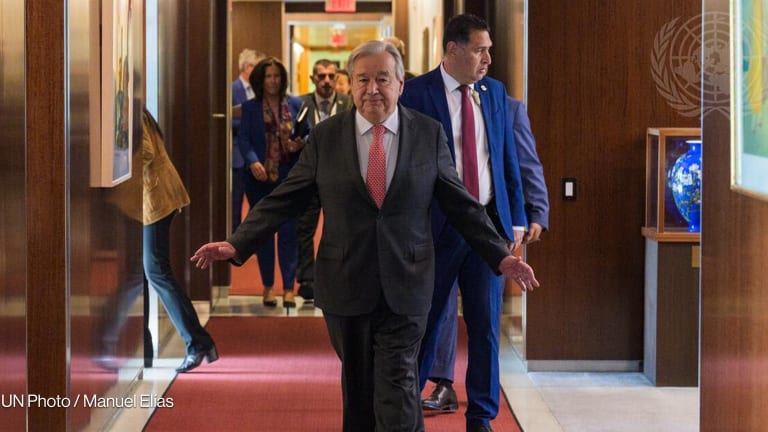EDITOR'S NOTE: The United States should formulate a comprehensive strategy for reforming the United Nations human rights architecture following the country's recent election to the Human Rights Council, writes Kara C. McDonald, an international affairs fellow in residence at the Council on Foreign Relations. For her full article, please visit the council's Web site. A few excerpts:
The Obama administration, which has stressed diplomatic engagement, decided that the United States cannot be absent from the UN's premier human rights body and should seek to improve its record from within. The UN General Assembly's May 12 election of the United States to a three-year term is a potential first step, but absent a comprehensive strategy to reform the UN's human rights architecture, including the scheduled reappraisal of the HRC itself, U.S. membership will become a sideshow.
The HRC was created in 2006 to replace the UN Human Rights Commission, a body widely discredited as a "coalition of abusers." The United States took a lead role in negotiating the successor body, but voted against the resolution creating the HRC due in part to continued concern about the ability of rights-abusing states to become members. Despite the checkered history of the UN's human rights bodies, founding human rights instruments like the Universal Declaration of Human Rights and the International Covenant on Civil and Political Rights are a positive legacy, and continue to provide a vision for the work of the UN's human rights bodies.
What can membership in the HRC achieve?
Some rights watchdogs believe that the United States, by its long-standing authority on human rights issues, will be able to sway the work of the HRC toward more serious human rights review. This is unlikely for two reasons. First, the perception that the United States holds a unique authority in human rights issues is largely defunct due to ongoing questions related to its recent interrogation and detention practices.
Second, the composition of the HRC is weighted toward Africa and Asia regional bloc dominance; these blocs together hold twenty-six votes, a majority on the body of forty-seven, and they have clearly demonstrated an avoidance of rights oversight and support for singling out Israel.
Navigating reforms
The administration must devise a comprehensive and long-term approach to its goals for the UN's human rights architecture. This approach should include the following elements:
• Name as a matter of urgency an experienced ambassador to the U.S. mission in Geneva and push for quick Senate confirmation.
• Begin a high-level dialogue with human rights allies to forge a common vision for the UN's human rights apparatus and a strategy to achieve it in coming years.
• Develop as part of this comprehensive approach a strategy to secure the support of like-minded countries on the HRC and to engage moderate members of the Asia and Africa blocs through bilateral relationships in capitals.
• Focus on ways to decrease the predominance of regional dynamics. One option would be the introduction of secret balloting to allow countries to vote their conscience rather than as pressured by others in their region.
• Examine the role of other human rights bodies at the United Nations.
To secure the investment of U.S. membership in the HRC, the administration must move quickly to devise a plan to resurrect the vision and energy of the UN's founding human rights mandate. A successful revamping of the UN human rights architecture would reassure those concerned about the direction of this administration's engagement with repressive states, prove that engagement as a policy can produce results, and demonstrate the administration's commitment to rights as a foreign policy priority.








